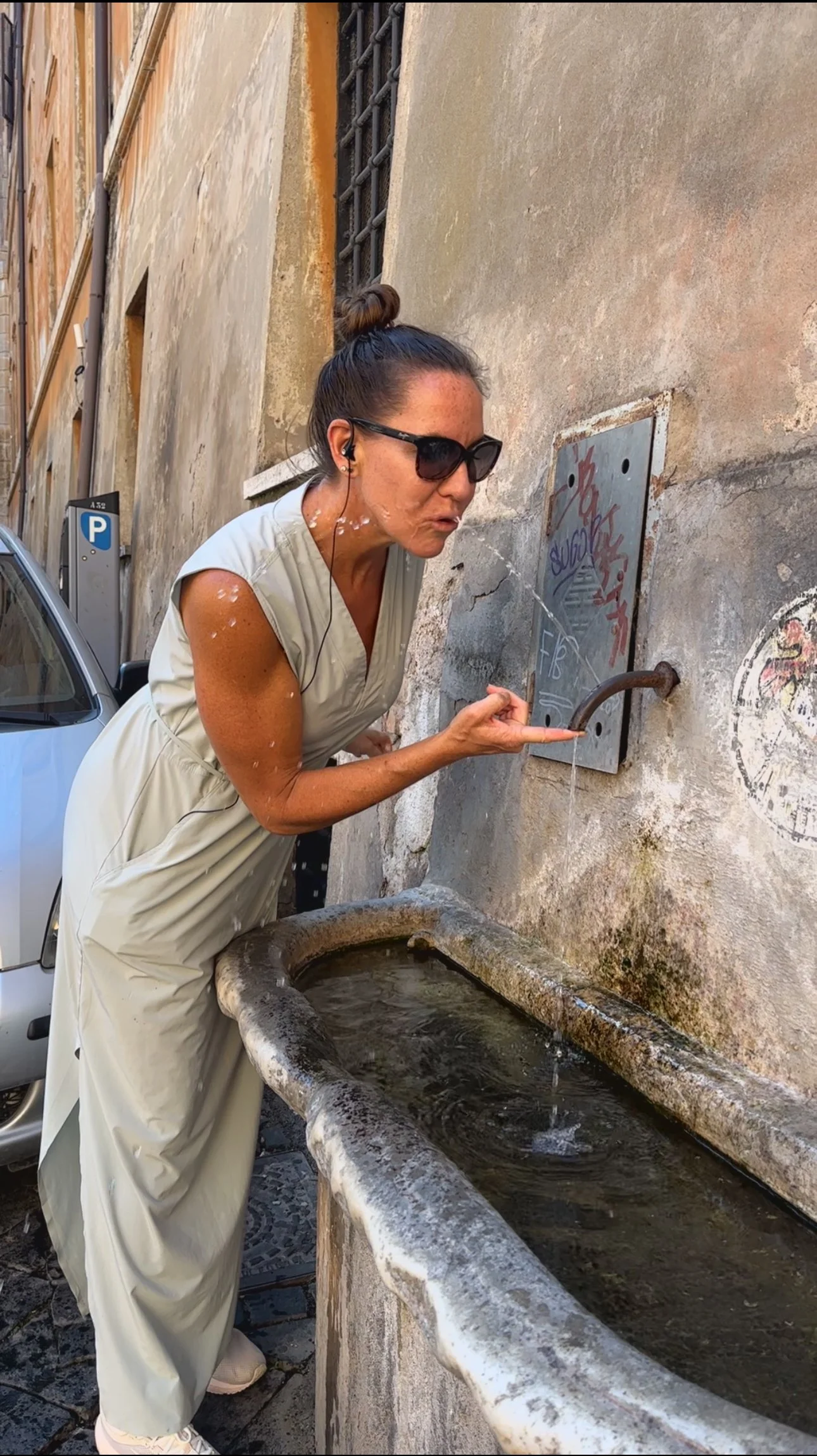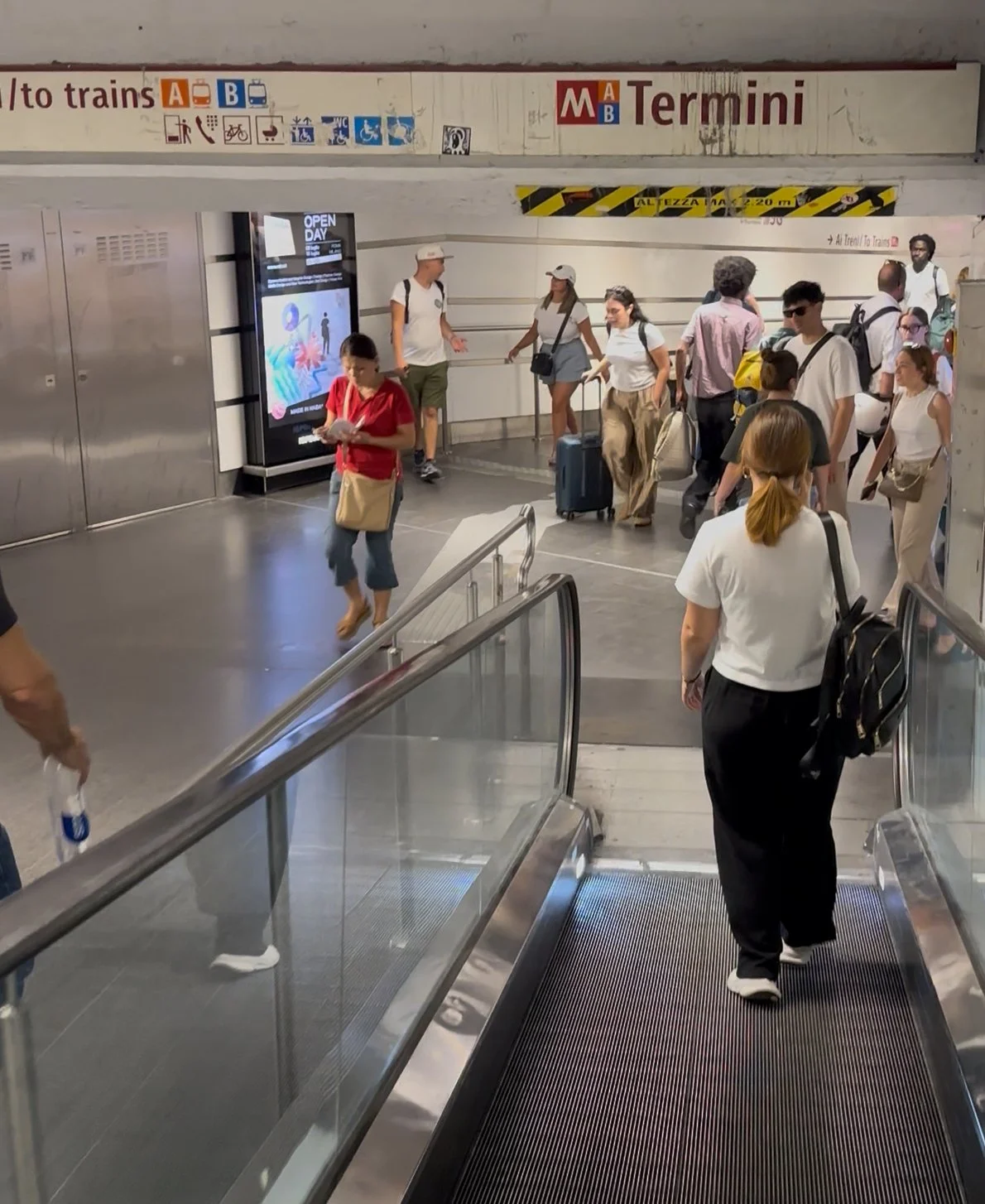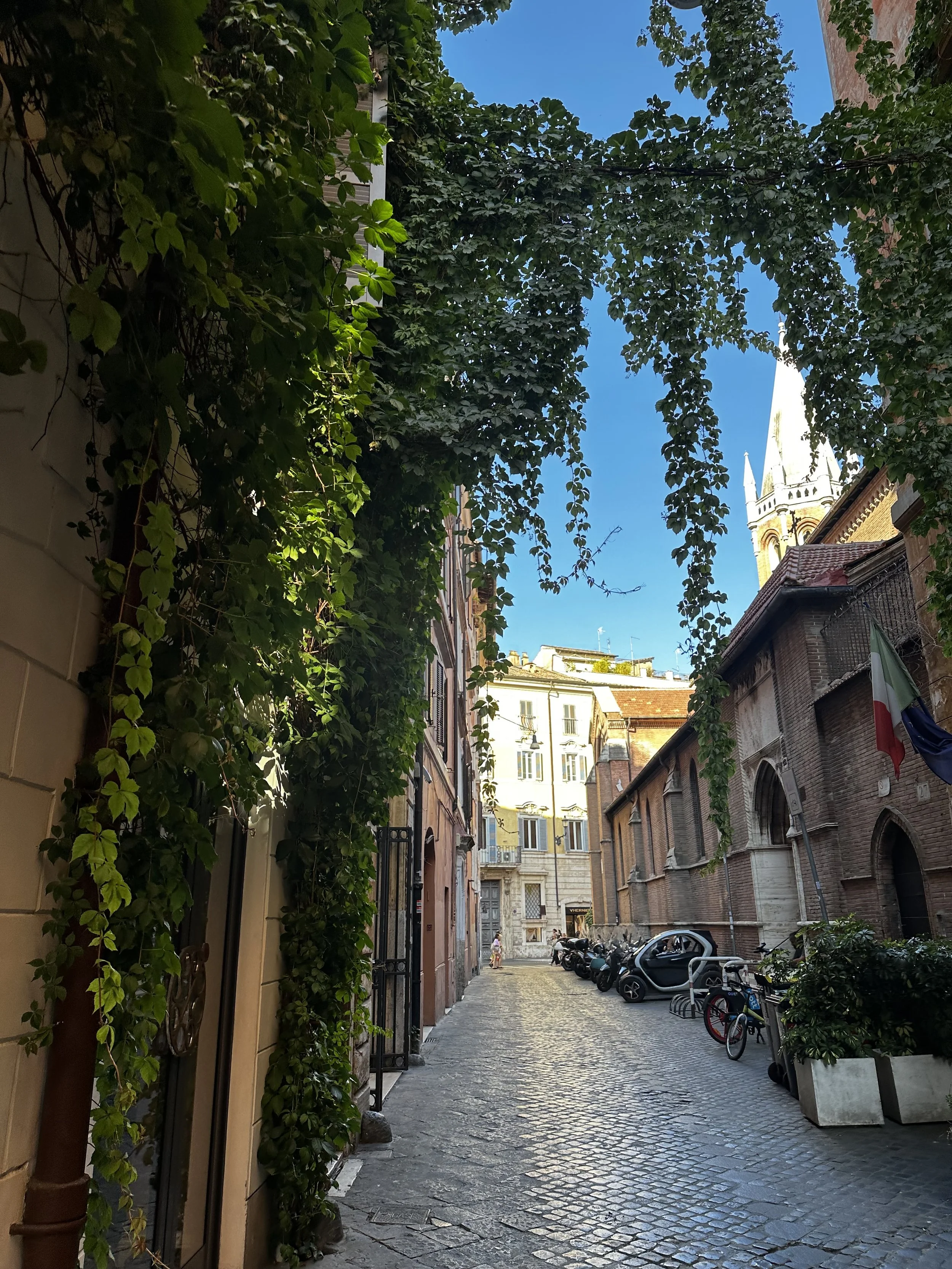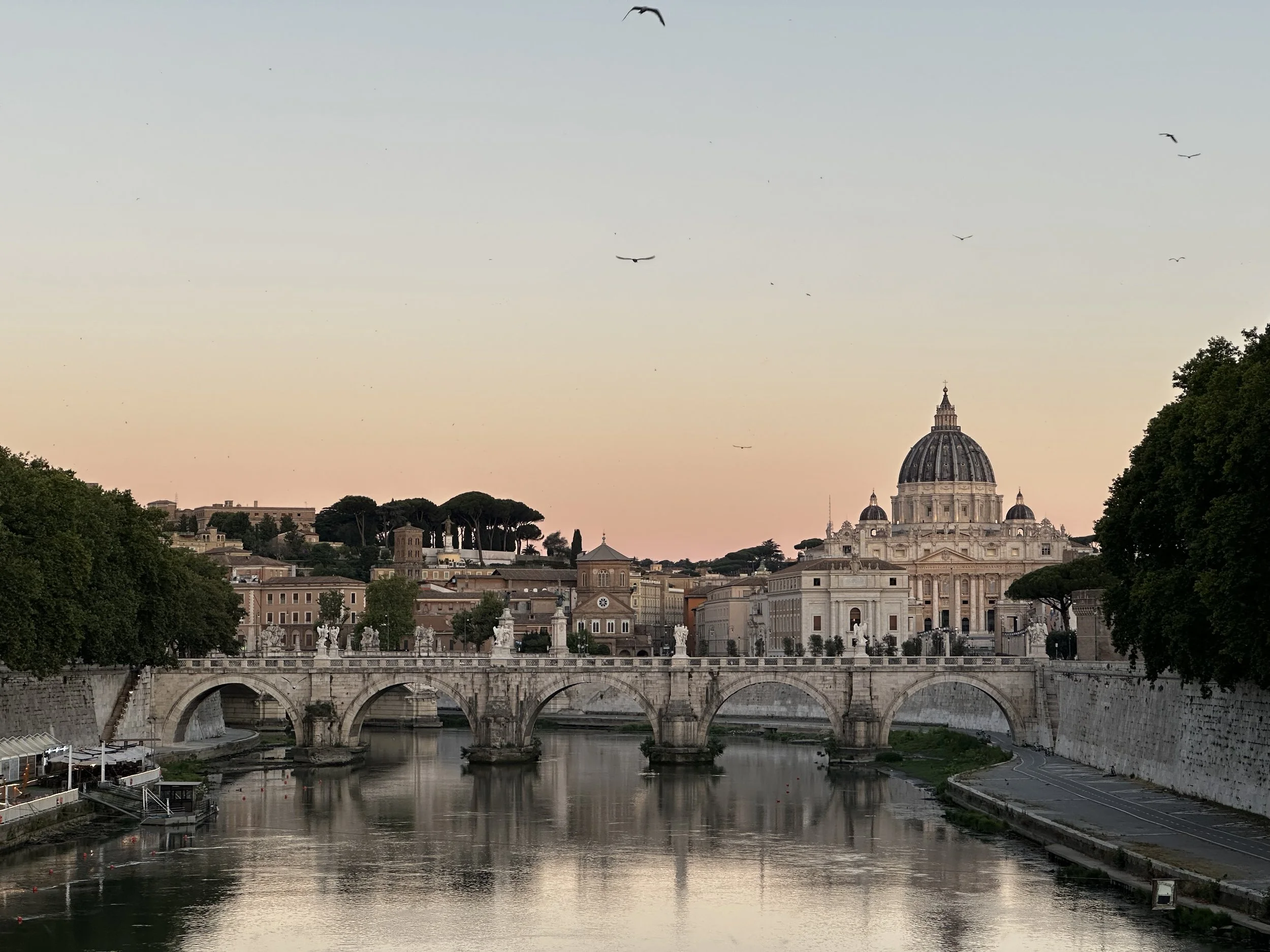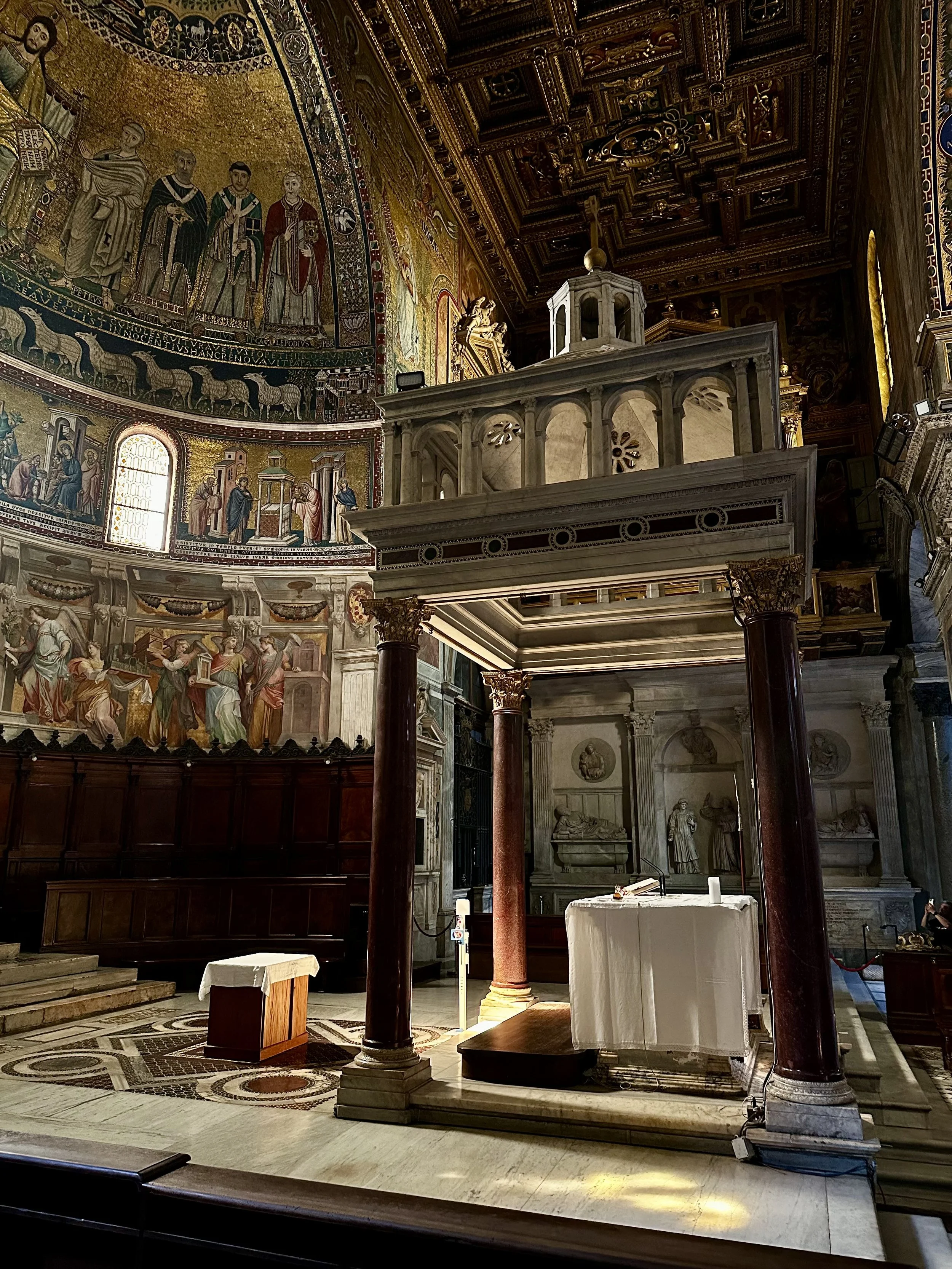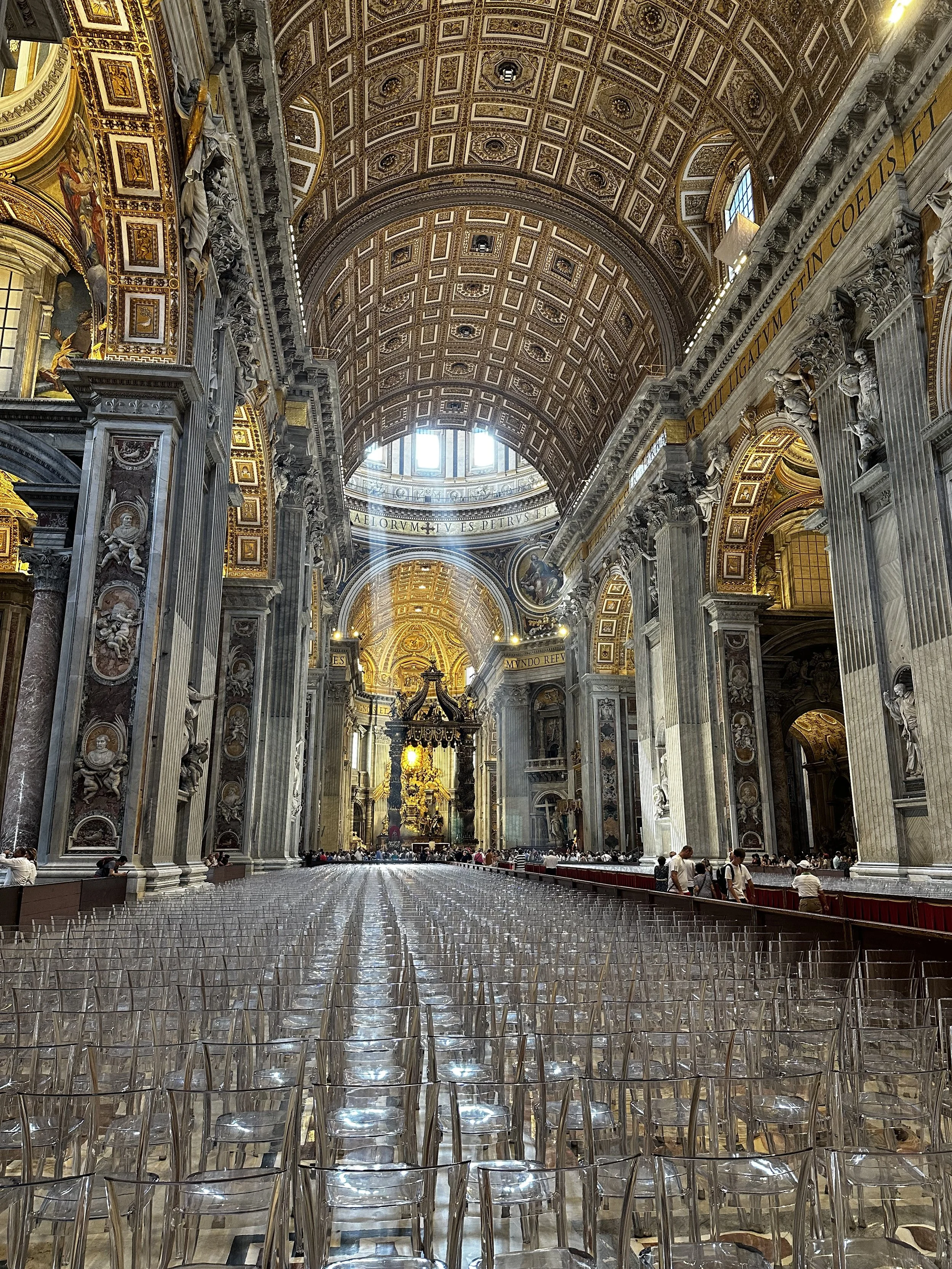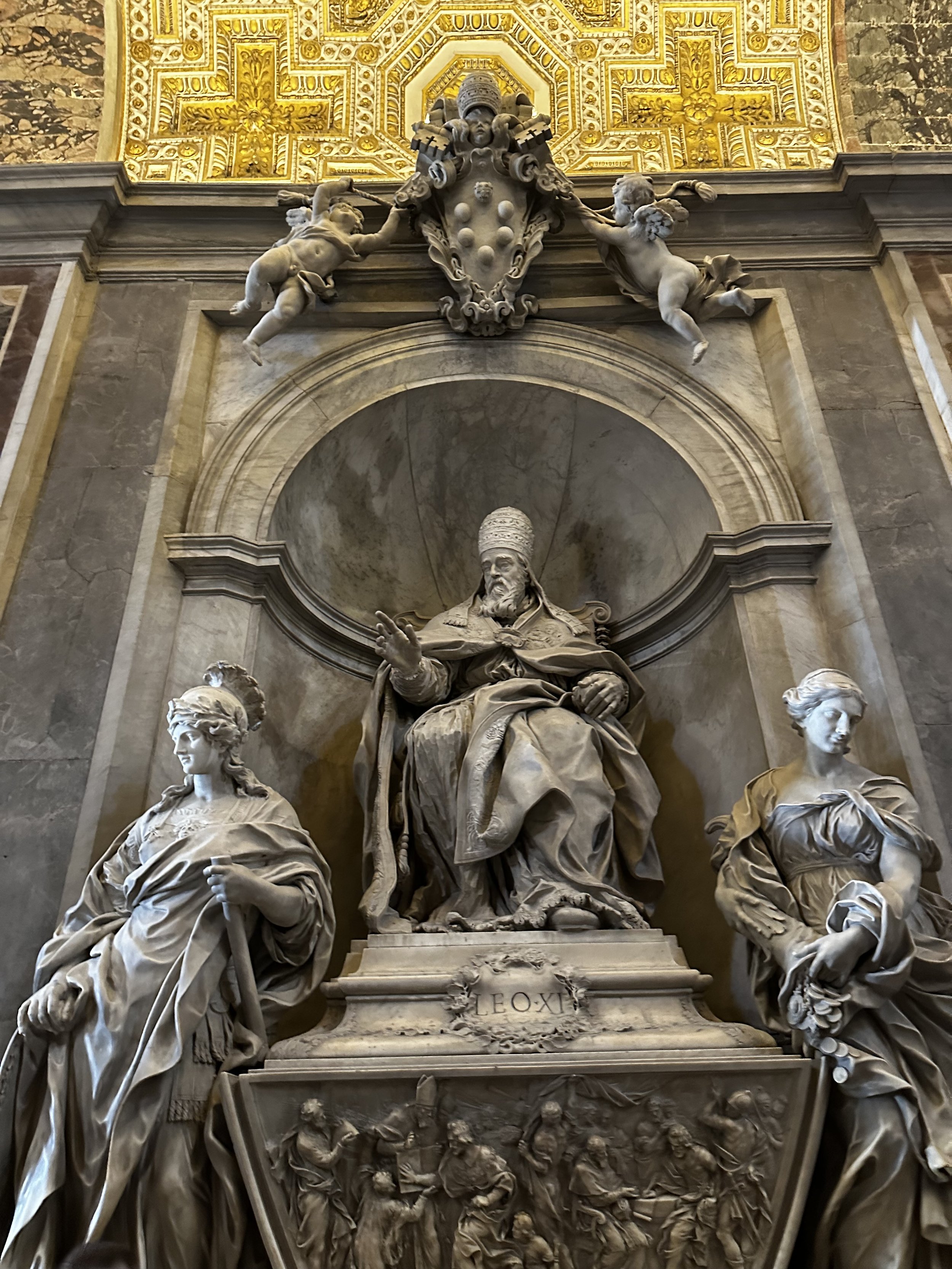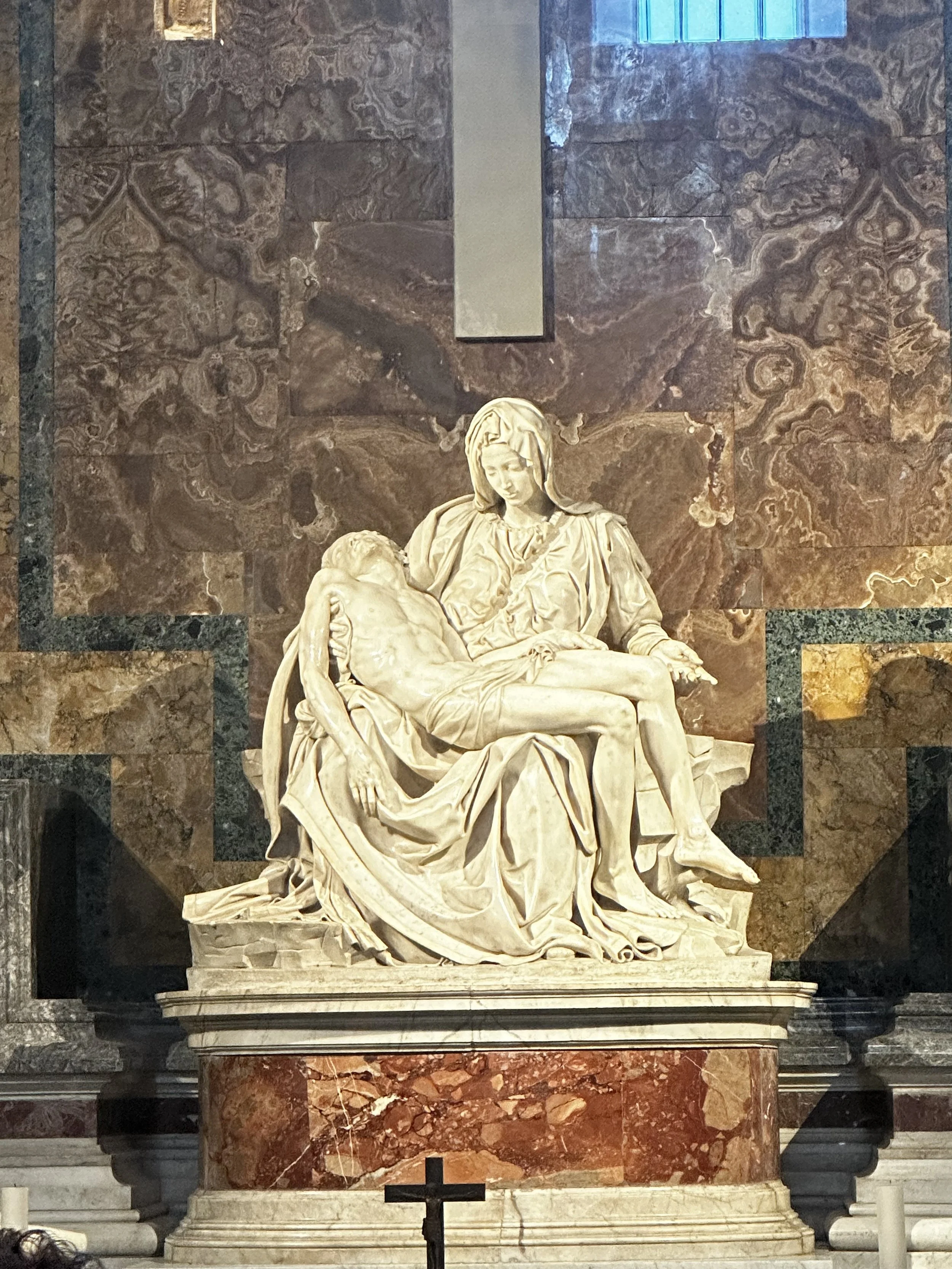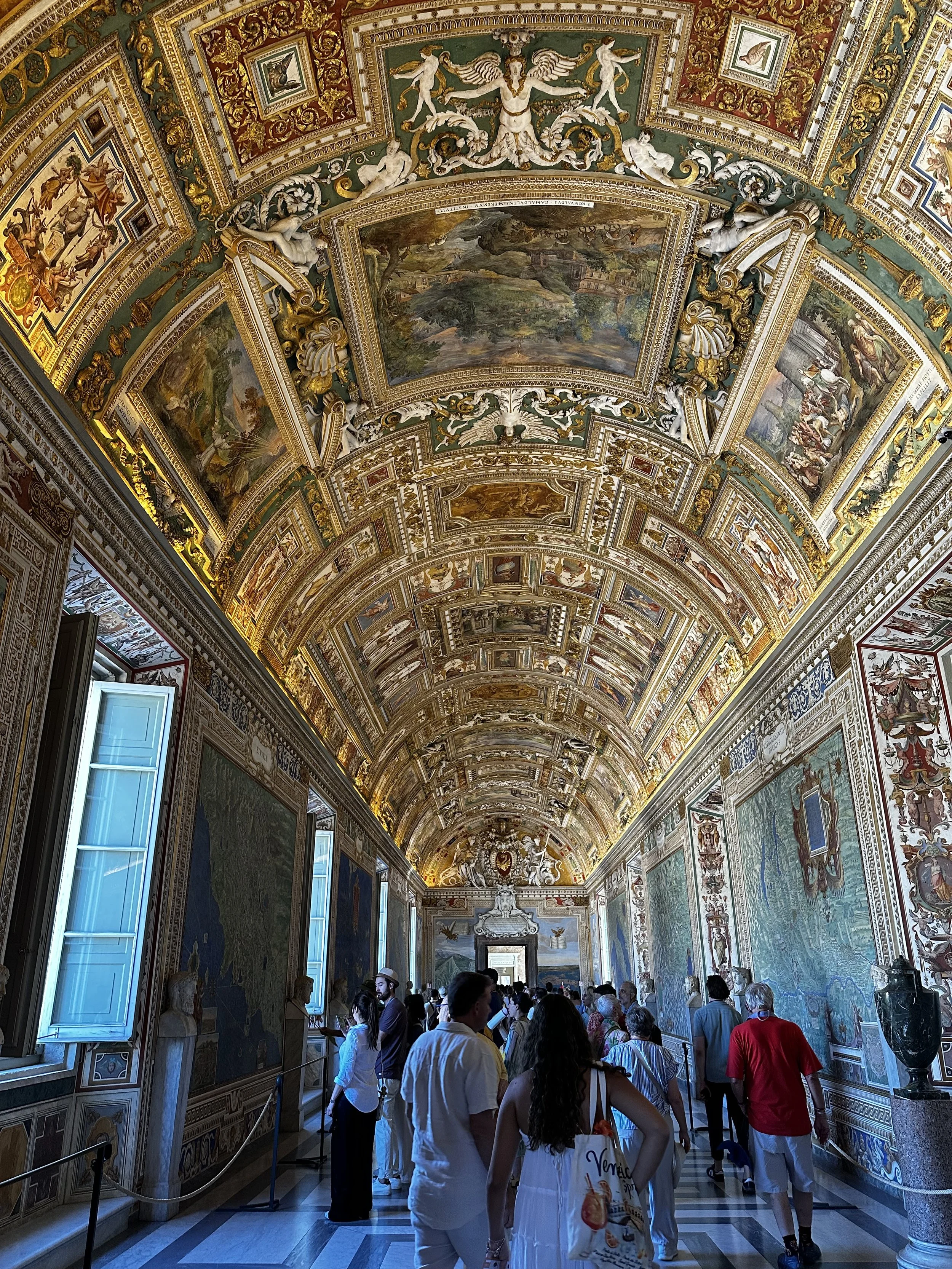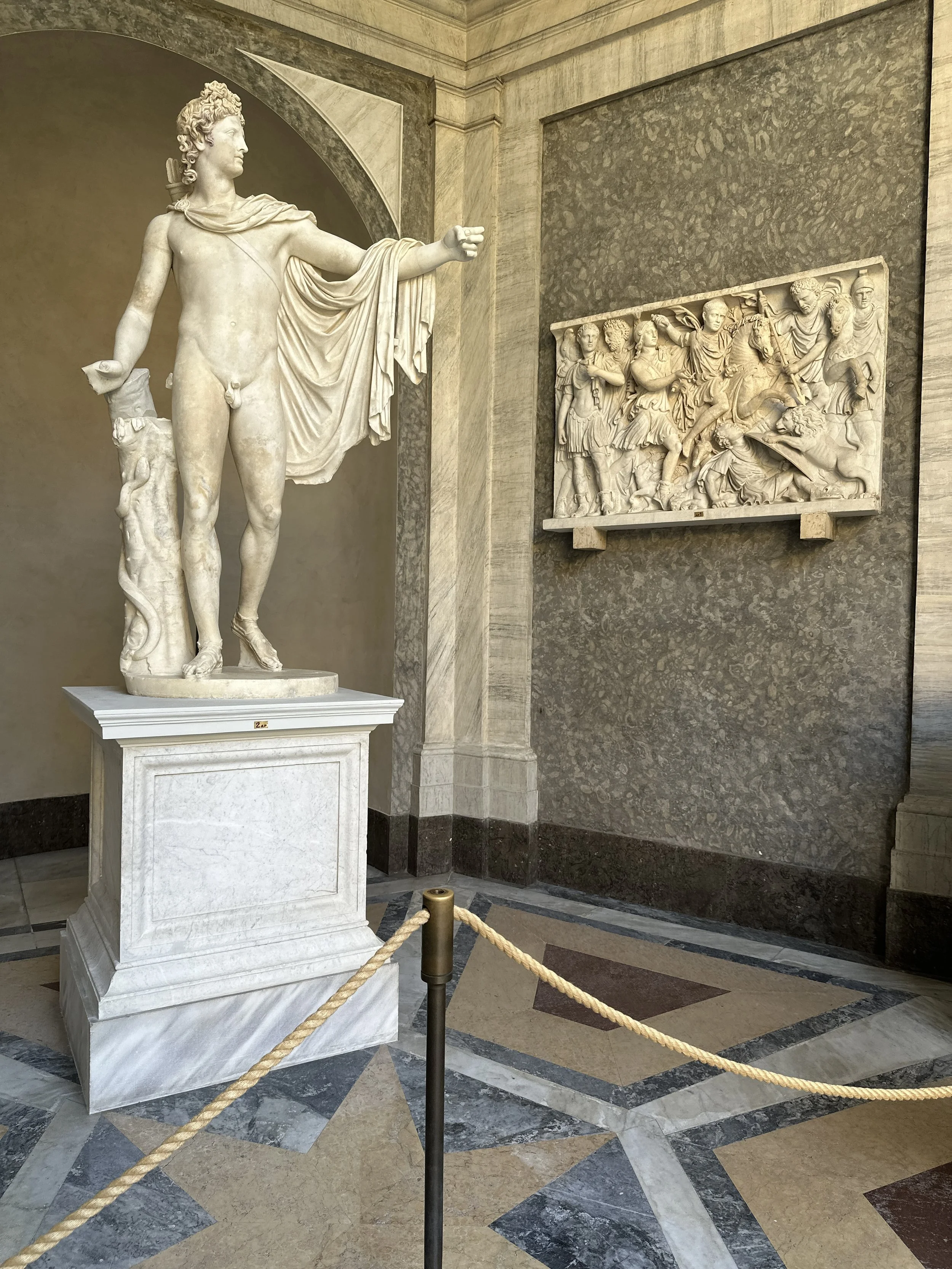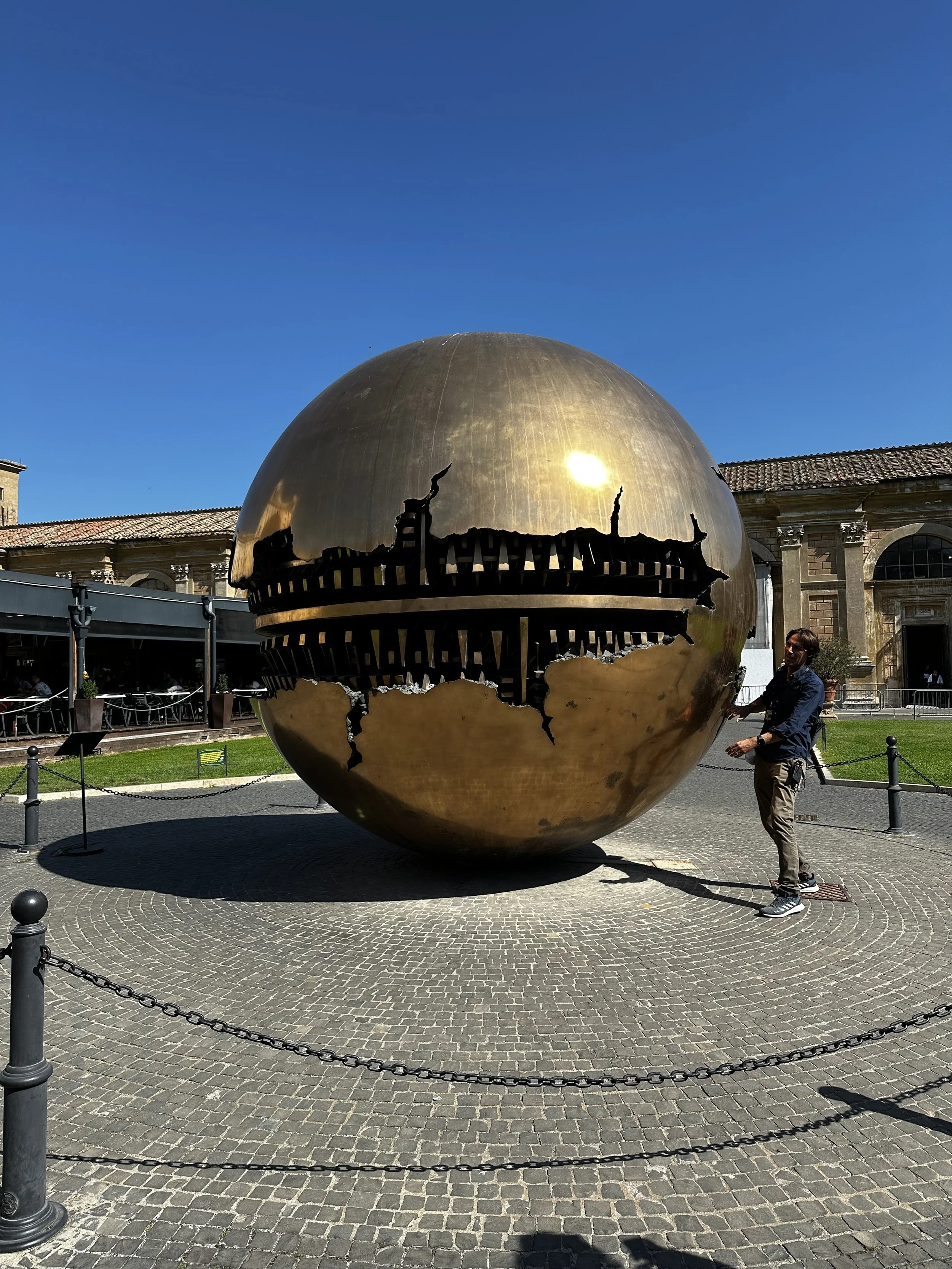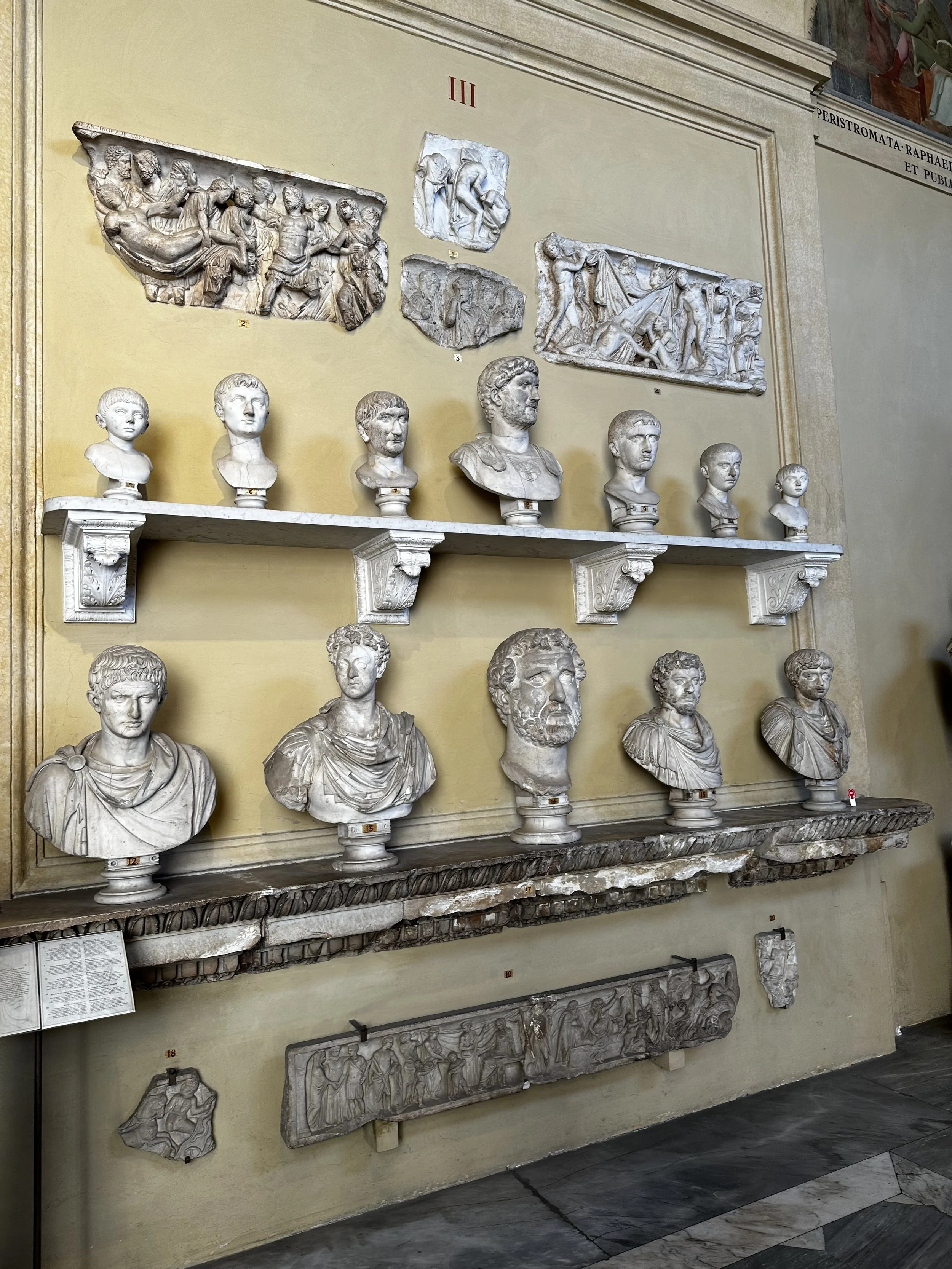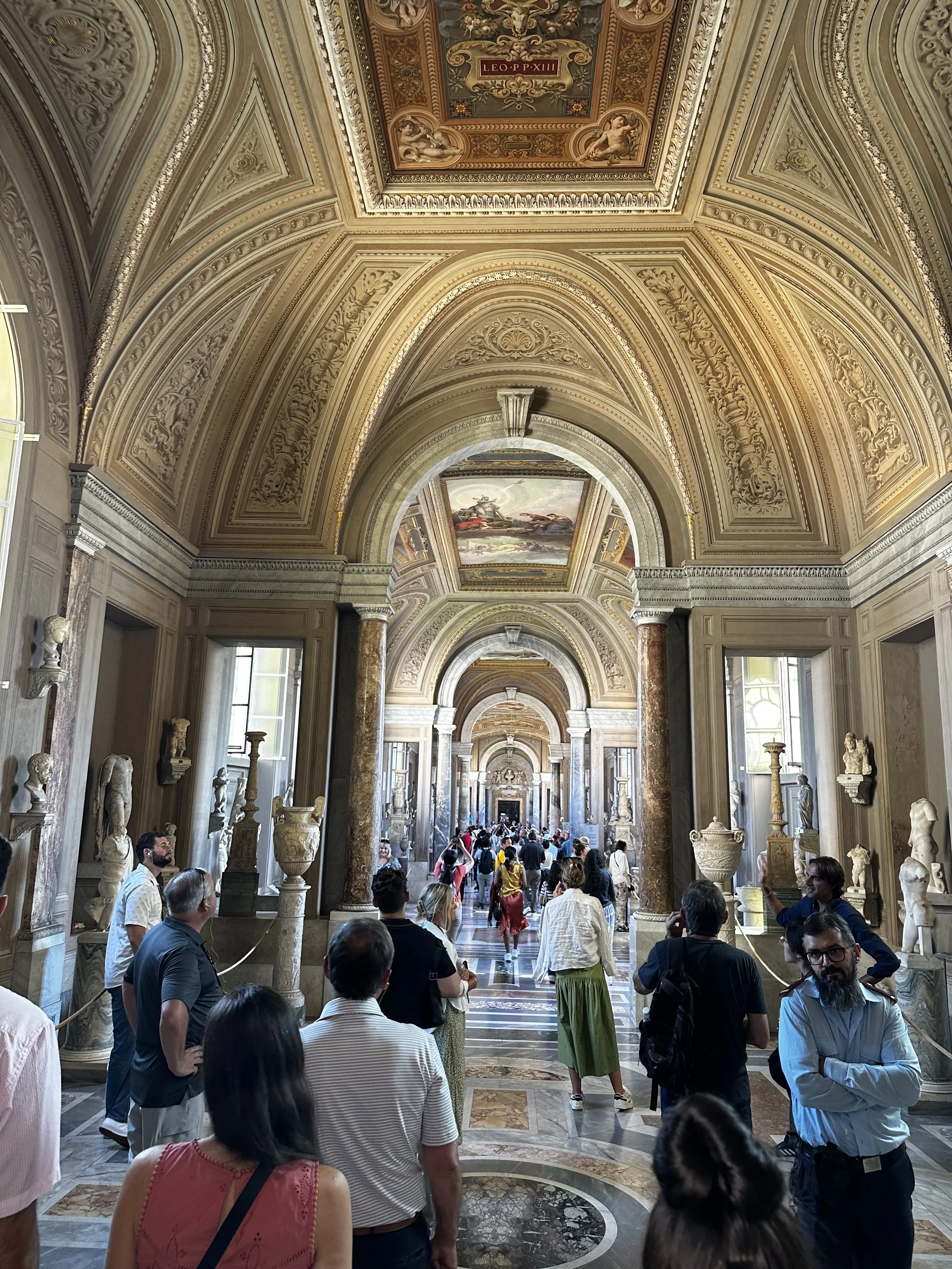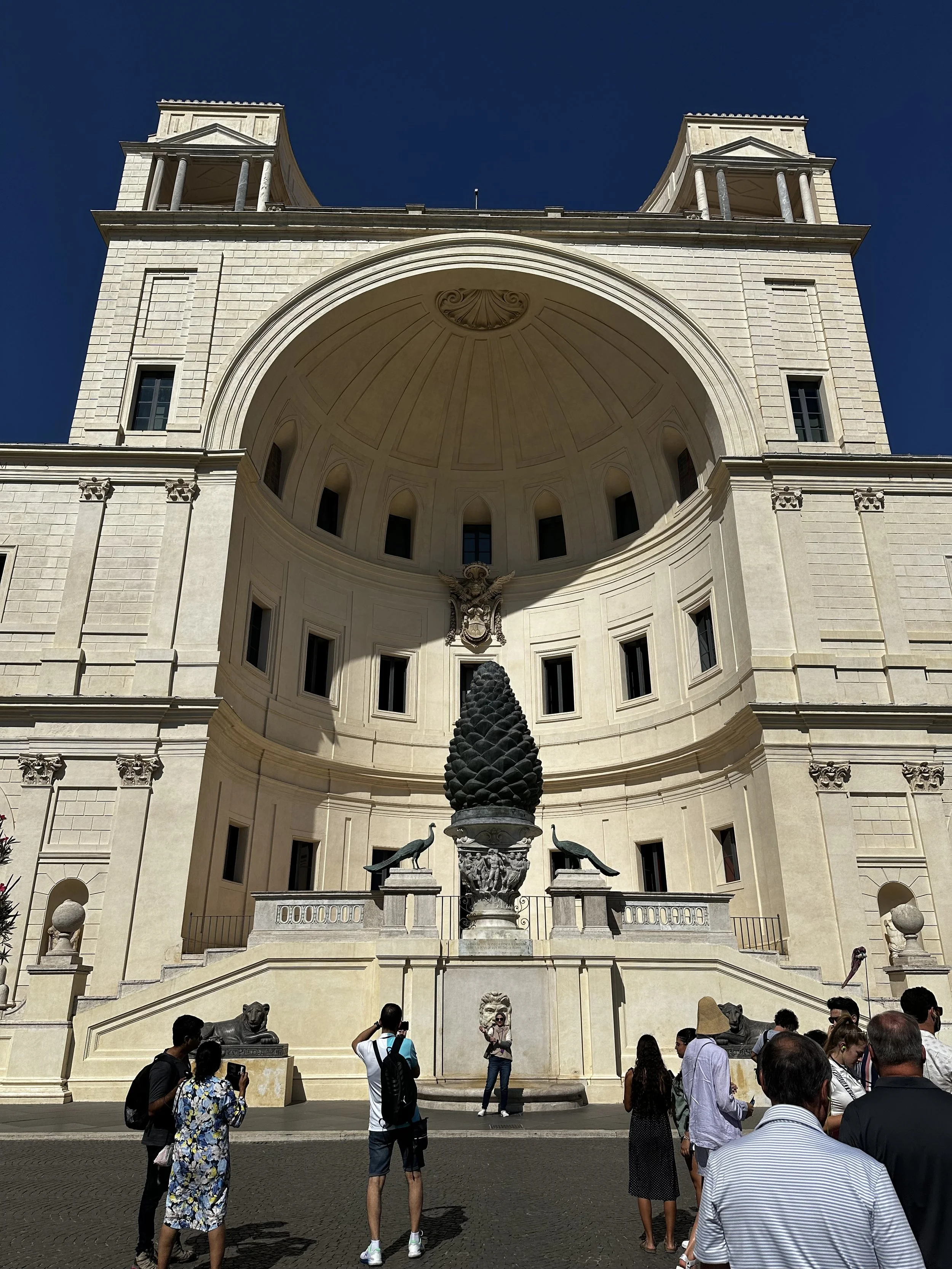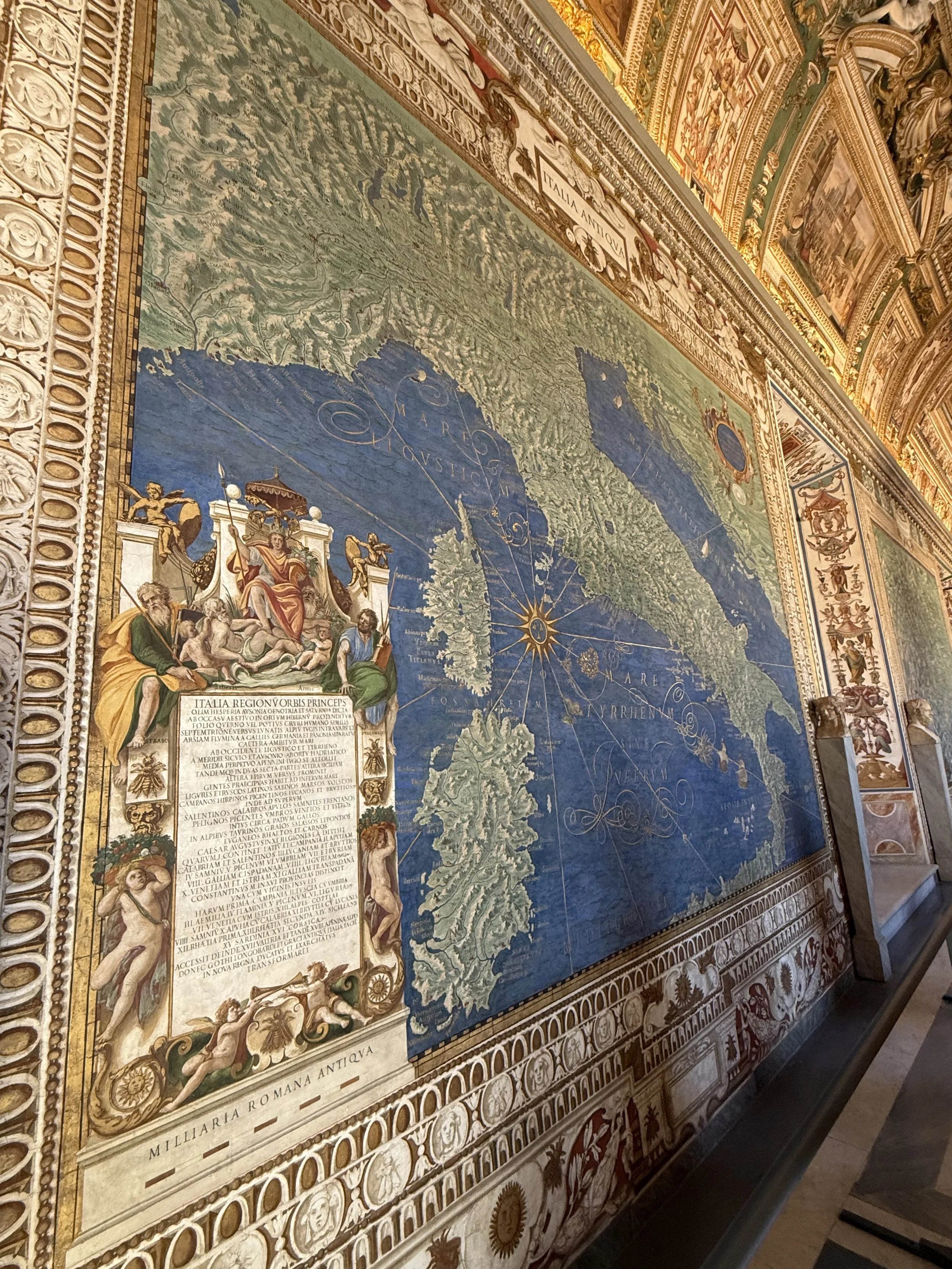Rome, if you want to…
Can you pull off a trip to Italy with less than a week’s notice? Absolutely. I did just that at the end of June when we (me & my partner John, but really me, the planner) spontaneously decided to spend a couple of days in Rome before heading down to Puglia. Maybe you’ll have a bit more runway than I did (pun intended, and fortunately I’d been here before) —but the beauty of Rome is how accessible - and surprisingly affordable - it can be. Some of the best experiences are completely free, especially when it comes to its stunning public spaces. A little know-how and a few solid recs go a long way, so here are some of mine—starting with my latest 48 hours in The Eternal City.
A few price points for reference - exchange rate was ~ $1 USD = € 0.85
Airfare - Last minute MIA - FCO - $930 pp, American Airlines nonstop
Accommodation - 2 nights total €257 + €7 pp city tax per night (most places prefer you pay tax in cash) Private Luxury Suites - This is where we stayed - I’m not an affiliate but it was a great location and a fair price
Metro/Subway - <€5 total - we used this a half dozen times or so
Leonardo Express - FCO - Roma Termini €14 each way
Taxi/Uber - we didn’t use
Level set: Rome is busy in summer —and iconic—so expect plenty of tourists. But unlike some European cities, the touristy spots here are absolutely worth it. If you're visiting in summer, brace yourself for the heat—we hit nearly 38°C (100°F) when we were there. The good news? You’ll find nasoni, the city’s charming public water fountains fed by ancient aqueducts, all over Rome (and in most Italian cities), and the water is perfectly safe to drink.
The water is clean, free flowing from most fountains
Getting around: If you're arriving at Fiumicino (Rome’s main international airport), grab a €14 Leonardo Express ticket (available at kiosks or online) to get to Roma Termini. Unlike in some European countries, you do need a valid ticket for trains in Italy—they check onboard. The Leonardo Express is often packed, and it’s not unusual to stand (another reason to pack light—see my tips!). Missed your train? No stress—take a breath, grab a cappuccino (as long as it’s before 11 a.m.), and catch the next one—they run frequently. From Termini, Rome’s two-line metro system is simple and efficient; you can tap to pay with your phone and get across town or over the Tiber in minutes. From your metro stop, it’s usually just a short walk to get where you’re going.
Subway system “Metro” - Branches are A & B
Where to stay: There are plenty of options, so definitely do your research. I recommend cross-referencing Booking.com, Airbnb, and TripAdvisor to get a full picture. I almost always prefer apartments, and this time we found a small suite between Piazza del Popolo and the Spanish Steps. If you’re only in town for a couple of days, this central spot is ideal—lively during the day with great shopping, restaurants, and those charming cobblestone streets. You don’t need to spend a fortune to find a comfortable place to sleep and you can definitely find places for less than what we paid. On our way back through Rome at the end of the trip, we stayed near the Cavour Metro station for convenience (we had a late train), but it was definitely louder—right in the middle of a nightlife-heavy area with lots of bars, clubs, and younger crowds.
Between Spagna (Spanish Steps & Popolo)
What to do: ChatGPT has made DIY tourism more accessible than ever and there are some places you can definitely explore on your own. Bear in mind Rome was not built in a day, but it was built by men, without modern machinery, so it is walkable! Most of the iconic stuff you want to see is easily strollable especially if you use public transport. In fact, CNN calls Rome the world’s most walkable city.
What to wear: You’ve probably seen the Instagram reels “How to tell an Italian from a tourist” - and it’s mostly true. Wear comfortable shoes - there’s no need for heels or flip flops, be sensible, the cobblestones are uneven and you will easily walk 20k steps in a day. Italians do dress up, but you are a tourist so you don’t need to wear a suit. Ladies - sundresses and linen are practical; guys - shorts and polos are fine during the day. Slacks at dinner are a nice touch if you’re going to a trattoria but if you’re staying in the tourist areas you’ll see plenty of people dressed casually. Use your best judgement based on where you’re planning to be.
Sites to see:
Coliseum: I didn’t do a tour of the Colosseum, but I still found it incredible to see up close—its scale and history are hard to wrap your head around. If you want to enter, I recommend either a skip the lines ticket or booking your timed entry in advance and going early or late in the day to avoid the worst of the crowds and heat. If you do a walking tour this will surely be a stop on the way, along with the Forum and Palatine Hill nearby.
Pantheon - Skip the formal tour and get the self guided €6 ticket at the door to check out Rome’s most well preserved structure built about 2000 years ago; the lines are relatively short and it’s most redeeming quality during a generational heat wave - it’s covered. Fun facts the walls are about 6M (18 feet) thick and the Pantheon serves as the burial place for the famous Renaissance painter Raphael. It’s also cool inside.
The Pantheon
Spanish Steps - grab gelato from Amarena (bottom of the staircase) and climb the 135 steps to the top for epic views at sunset - it is not to be missed! Pro Tip: Trevi Fountain is a :10min walk for spectacular night pictures with less crowds than the day and afternoon. There are now queues during the day for those wanting photos in front of the fountains, arrive before 10am or after 6pm for the best photo opportunities without long lines and fussy rules.
Spanish Steps (From the Top / Spagna)
Ponte Umberto Bridge - go at sunrise for the best morning pictures of St. Peter’s & the Vatican over the Tiber River. One of my favorite things to do in any city is an early morning run (if running isn’t your thing, then a walk is great too) and Rome is no exception. Pro Tip: you’ll have the city to yourself before 8am, Romans are not early risers, and all popular photo spots are virtually empty. Start above Spanish Steps and head down to Piazza del Popolo. From there you can take the path along the river south to the bridge and continue all the way to the Vatican if you like (about 2 miles total). Scroll down for my map of this route.
Piazza del Popolo
St. Peter’s Basilica view from Ponte Umberto Bridge at sunrise
Trastevere - beat the afternoon crowds and head to this walkable neighborhood south of the Vatican. Anthony Bourdain was said to have loved this part of town the best and you’ll know why. Small trattorias and shops, canopied streets, it’s what you pictured in the movies.
What to eat - where the locals go - Suppli - tiny place on Via di San Francesco - try the suppli (yes, same name as the establishment, also Roman rice balls) and Roman style pizza - this was in my top 3 favorite pizzas ever - it’s not what you expect - it’s better. Pro tip: Suppli is inexpensive, and like many street vendors & cafes, they prefer cash to card.
Suppli !
This was the Carbonera - the size of a baseball - €2
Roman Style Pizza
Always rectangle, thin crust, basil, fresh cheese and look at the color of those tomatoes - €2
Walk off your street food with a stroll down the tree lined streets to the Basilica of Santa Maria. One of the oldest and most beautiful churches in Rome, it dates back to the 3rd century with major reconstruction done during the 12th Century. It is widely believed to be the first church in Rome to be dedicated to the Virgin Mary. If you’re a self-proclaimed Ecclesiophile (lover of churches) like me, 12/10 this church is an underrated gem in Rome.
Basilica of Santa Maria
Tours - There’s the enjoyable way to see Rome, and then there’s the struggle way—melting in the Roman heat and chasing pins on Google Maps. I recommend taking a tour to catch the highlights and get a dose of history (at least the version your guide swears by). In Italy, tour guides are licensed, which means they bring real expertise and insight to the experience.
My favorite local guide @Isuf_Alla and his company Lock Your Tour offers a great walking tour of the Coliseum meandering through Roman Ruins, Trevi Fountain, and other famous sites ending near the Spanish Steps. No one has more fun sharing Roman history. I met Isuf a couple years ago when I was in town. He offers a wealth of local tips throughout his tours and his own personal story is fascinating.
Tell him Miranda and John sent you ;)
The Vatican - Pro Tip: Do not buy a single ticket and try to enter on your own, or try to buy a ticket at the door. You will see people wrapped around the walls waiting to enter. You don’t want to be one of those people.
A note on Vatican Tours and Guides: I have had great guides and I have had ok guides, but I have never had a guide that was worse than waiting 3 hours in 100 degree heat to enter St. Peter’s Basilica or the Vatican Museum (yes, you will need 2 tickets, and you still won’t get into the Sistine Chapel). You will wait that long.
Vatican tours can be pricey—€80 to €140 is pretty typical depending on the day and time—but in my opinion, the time savings and insight are well worth it. Most tours last around 2.5 to 3 hours and are absolutely fascinating, even if you’re not Catholic. A few years ago, I had a guide who sounded uncannily like Nandor from What We Do in the Shadows and casually mentioned that if you spent 10 seconds on every piece of art in the Vatican Museums, you’d be there for over 25 years. (Take that, British Museum.) One of my favorite parts? The gallery of maps—some over 500 years old—showing an impressively accurate understanding of geography and circumnavigation long before the U.S. even existed.
Late 1400s circa
GetYourGuide.com, TripAdvisor, Viator, and TheRomanGuy are all reputable tour operators (no affiliation—just experience). The key is making sure your tour includes skip-the-line access (that’s the real magic) and covers the Vatican Museums, Sistine Chapel, and St. Peter’s Basilica. We booked last minute on an Italian holiday weekend with TheRomanGuy and paid €120 per person—which was on the pricey side—but happened to be there during the Jubilee (held every 25 years), so we entered through the open Holy Door at St. Peter’s—a special and completely unexpected moment.
Holy Door at St. Peter’s
For a great view and a reasonably priced bite - check out Bono Bottega Nostrana - San Pietro In the NW corner of the Vatican. This place is rarely busy, away from the crowds and you can get a Spritz and a Panini with a view of St. Peter’s for €15.
Reasonably priced, given the location
Italian cuisine is distinctly regional - some locally Roman dishes you’ll find at every trattoria:
Cacio e Pepe - Pasta (usually tonnarelli or spaghetti) with Pecorino Romano cheese and freshly ground black pepper. Simple, bold, and peppery
Carbonara - Made with eggs, guanciale (cured pork jowl), Pecorino Romano, and black pepper—no cream in the authentic version
Amatriciana - (my favorite!) Tomato sauce with guanciale and Pecorino Romano. Typically served with bucatini or rigatoni
Gricia - The “white” version of Amatriciana, without tomato—just guanciale, Pecorino, and pepper. A true Roman classic
And finally, a few unwritten rules of Italian etiquette to help you meander with a little grace and ease:
Breakfast is minimal – Italians usually start their day with a quick espresso and maybe a cornetto (a light, sweet pastry), often standing at the bar rather than sitting down.
Coffee culture has rules – Don’t order a cappuccino after 11 a.m.—it’s considered a breakfast drink, and you might get side-eyed.
Meal times are later – Lunch rarely starts before 1 p.m., and dinner often doesn’t begin until 8 p.m., especially in Rome (you’ll want reservations at most places, use Google Translate & Whatsapp to communicate)
Tipping is modest – A few coins or rounding up the bill is appreciated, but tipping like in the U.S. isn’t expected.
You often need cash – Especially in small trattorias, markets, or when buying a quick espresso.
Crosswalks are a negotiation – Roman drivers are bold, but if you step confidently into the street (after checking!), they’ll usually stop.
Sunday is sacred – Many shops and restaurants close or have limited hours, and the city slows down noticeably.
Coperto isn’t a scam – The small fee on your bill at sit-down restaurants is a cover charge, not a tip. It’s standard practice in much of Italy.
~Mangia bene, amico mio
Coperto…
-m

